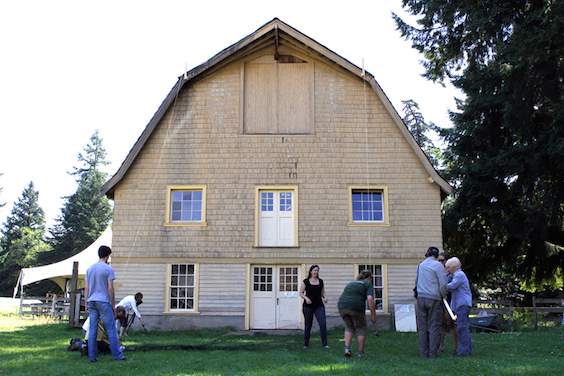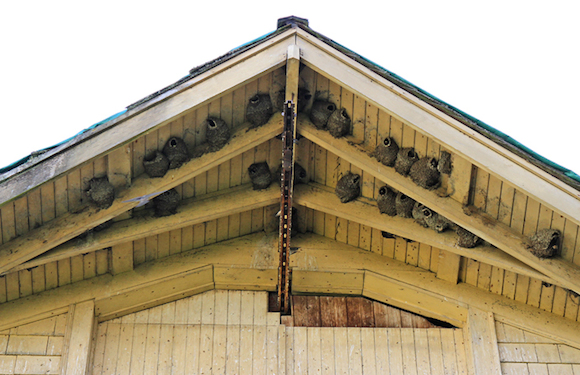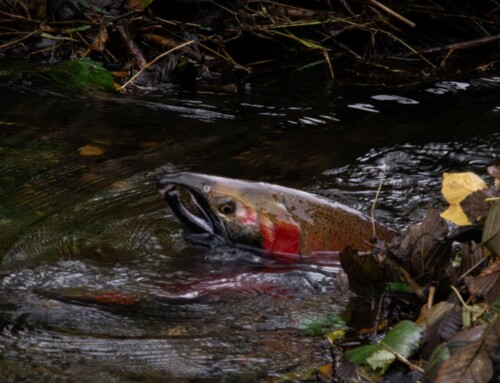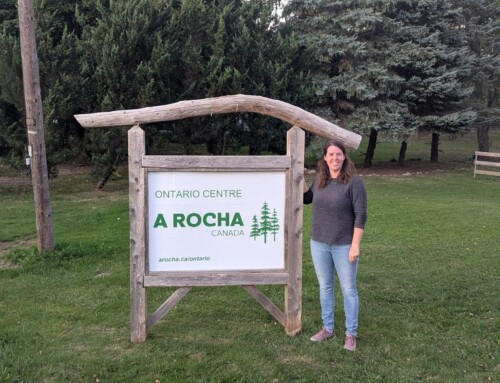This summer A Rocha Canada took flight with a swallow monitoring program at Brooksdale Environmental Centre (Surrey, BC). With expertise and help from members of the Vancouver Avian Research Centre, we successfully captured, banded and released members of the cliff swallow colony nesting under the eaves of our heritage barn.
It was a special opportunity to connect with such committed & bright folks from the Vancouver Avian Research Centre. Here is an excerpt from a recent post about their summer-time activities – this one featuring our recent swallow monitoring efforts! Thanks again to the Centre for your help!

…We were also approached by an organization called A Rocha who wanted to start a swallow monitoring program on their 40 acre property in south Surrey. A Rocha is an international organization which engages in scientific research, environmental education, community-based conservation and sustainable agriculture projects.
The first part of this project involved banding a Cliff Swallow colony under the eaves of a heritage barn on the property – the challenge was the barn was over 50 feet high!
My credibility at catching birds was already shaky given my attempts to catch Belted Kingfishers at a fish hatchery where we only caught a single Song Sparrow and further damaged last fall when our Northern Saw-whet Owl monitoring didn’t produce a single owl!
Still, not to be deterred I designed a 6m pulley net to hoist up in front of the nests, the only problem was who was going to volunteer to climb a rickety ladder 50 feet off the ground to attach the wooden extensions and eyelets necessary to operate the net. Enter Ivand (yellow T-shirt below) our all round good guy volunteer who not only shot up the ladder with various tools and rope in his hands but did it in his wellies!
Redemption for me and my bird catching skills when we almost immediately caught our first Cliff Swallow and proceeding to catch 20 more!
Cliff Swallows are part of the guild of aerial insectivores, birds that specialize in feeding on flying insects and populations have fallen steadily and consistently since 1970.
Having complete first and adult prebasic molts makes ageing adult birds impossible and sexing is difficult too given very little difference in biometric measurements such as wing chord and that males can also develop partial brood patches. Separating juveniles from adults is easy as the photos below show; adults have buffy and well defined forehead patches and chestnut throats and cheeks whereas juveniles have brownish and less well defined forehead patches and mottled, blackish washed cheeks and throats.
Thanks to A Rocha for their interest in this project (and for providing lunch!) and we hope that ongoing monitoring efforts in the coming years will contribute to continent-wide research programs underway to better understand the breeding biology of these amazing birds…
See photos up close & read the full blog here!

(Photo credits – Vancouver Avian Research Centre)






